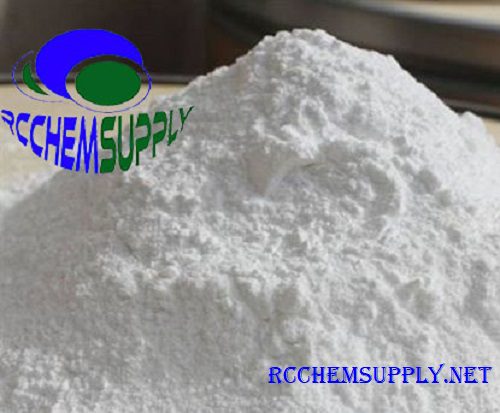What Is JWH 018 Most Commonly Called?
What Is JWH 018 Most Commonly Called? : JWH-018 is most commonly referred to as a synthetic cannabinoid. It is a chemical compound that acts on the cannabinoid receptors in the brain, producing effects similar to those of cannabis. However, it is important to note that the use of synthetic cannabinoids, including JWH-018, can have serious health risks and legal implications. It is always recommended to prioritize safety and legality when considering the use of any substances.
1-pentyl-3-(1-naphthoyl)indole – That ‘natural’ cannabinoid, widely used in conjunction with tobacco in the United States, primarily by vapers but also by electronic cigarette users, probably originated in a compound of the Brazilian Lourová Hyemeticus mold (vitressin) [it has never been found in any other substance]. This is a Class A drug and the legal classification is controlled as a Schedule 1 drug with an anesthetic-toxicological profile that raises the possibility of permanent brain damage if taken regularly for too long. Is this the origin of JWH-018?

What are some effects of JWH-018? | 1 Pentyl 3 1 naphthoylindole
It produces similar effects in animals to tetrahydrocannabinol (THC), a cannabinoid contained in cannabis, which has led in some countries to its use in synthetic cannabis products sold as incense or mixtures. [Sources: 6] The primary cannabinoid in cannabis, delta-9-tetrahydrocannabinol (D9-THC), is a partial CB1 receptor agonist. The analgesic effects of cannabinoid ligands are mediated by CB1 receptors, which are established well in the treatment of neuropathic pain, cancer pain, and arthritis.
1-pentyl-3-(1-naphthol)indole can produce psychoactive effects similar to those of THC when smoked. It is not psychoactive. Synthetic cannabinoids are synthetic cannabinoids designed to give the same psychoactive effects as THC but are not natural cannabinoids but are structurally very similar.
What Is JWH 018 Most Commonly Called?
JWH-018, a synthetic cannabinoid, is most commonly referred to as JWH-018 itself. It is a full agonist of both the CB1 and CB2 cannabinoid receptors, with potent cannabinoid-like activity. This compound belongs to the aminoalkylindole family and has a chemical structure different from THC but produces similar, more potent effects
How addictive is JWH-018?1 | Pentyl 3 1 naphthoylindole
JWH-018 is similar to morphine. The only way to accurately determine whether you are currently experiencing Naphthalen-1-yl-(1-pentylindol-3-yl)methanone intoxication is to be aware that this compound is under review by the FDA to determine the safety of this compound in all forms. 1-pentyl-3-(1-naphthoyl)indole is listed as one of the safest cannabinoids when smoked but is considered as high risk when ingested orally. This poses an added risk of potential addiction when someone uses it orally or taken in pill form, whether purchased or sold.
What Are The Symptoms and Side Effects of JWH-018?
- Physical Symptoms:
- In some instances, ingestion of pure JWH-018 has led to physical symptoms such as seizures and supraventricular tachycardia, indicating potential risks to cardiovascular health
- Synthetic cannabinoids like JWH-018 have been linked to adverse events including tachycardia, agitation, nausea, seizures, acute kidney injury, new onset psychosis, severe cardiac crises, and even death, especially with dose escalation
- Psychological Effects:
- Individuals using JWH-018 commonly report psychological side effects like confusion, amnesia, and dissociation
- Anxiety and psychotic symptoms are prevalent after JWH-018 use, with a significant percentage of users experiencing or exhibiting symptoms consistent with psychotic relapse
- Behavioral Changes:
- Research has shown that administration of JWH-018 can induce behavioral changes such as suppression of locomotor activity, impaired walking, and ataxia in individuals
- Vulnerable individuals exposed to JWH-018 may experience altered internal and external perception, dissociative effects like amnesia and derealization, and feelings of confusion
What are the risks of JWH-018 use?
JWH-018, a synthetic cannabinoid present in products like “Spice” or “K2,” poses various risks associated with its use, as highlighted in research studies:
- Physical Health Risks:
- In some cases, ingestion of pure JWH-018 has led to adverse physical effects such as seizures and supraventricular tachycardia, indicating potential risks to cardiovascular health
- Synthetic cannabinoids like JWH-018 have been associated with adverse events including tachycardia, agitation, nausea, seizures, acute kidney injury, new onset psychosis, severe cardiac crises, and even death, especially with dose escalation
- Psychological Impact:
- Individuals using JWH-018 have reported common psychological side effects such as confusion, amnesia, and dissociation
- Vulnerable individuals exposed to JWH-018 may experience anxiety and psychotic symptoms, potentially leading to psychotic relapse after use
- Long-Term Behavioral Consequences:
- Research on adolescent mice exposed to JWH-018 has shown long-term behavioral impairments, suggesting potential behavioral consequences from exposure during adolescence

What are the long-term effects of JWH-018 use?
Long-Term Effects of JWH-018 Use
JWH-018, a synthetic cannabinoid found in products like “Spice” or “K2,” has been associated with various long-term effects based on research studies:
- Psychological Side Effects:
- Repeated exposure to JWH-018 has been linked to psychological side effects, with individuals commonly experiencing issues like confusion, amnesia, and dissociation
- An explorative study highlighted that although psychological side effects were common, individuals did not report becoming physically unwell after using JWH-018
- Behavioral Consequences:
- Adolescent exposure to JWH-018 has shown to induce long-term behavioral consequences in mice, indicating potential behavioral impairments as a result of exposure during adolescence
- Studies have reported behavioral changes in individuals after using JWH-018, such as suppression of locomotor activity, impaired walking, and ataxia
- Cognitive Impairments:
- Responders to JWH-018 have demonstrated poorer performance in tests measuring reaction time and increased levels of confusion, amnesia, and dissociation compared to nonresponders
These findings suggest that the long-term use of JWH-018 can have significant impacts on psychological well-being, behavior, and cognitive functions. It is crucial to be aware of these potential consequences when considering the use of synthetic cannabinoids like JWH-018.

What Is JWH 018 Most Commonly Called?
JWH-018 is found in a number of substances and is still the primary ingredient in many designer drugs, such as
-
- “Cat poison”
- Wasabi oil
- Synthetic THC
- Synthetic marijuana
- 1-pentyl-3-(1-naphthoyl)indole is also still sold in high-potency mixtures under various names like:
- Spice
- Mystery blend
- Sea breeze
- Day-u
- Dope
- Purple dragon
- Fish
- Sinilla
- Big snake
- LA-VR-x
- Deep-fryer
- Party bong
- Day-u-3-tet
- Shock
- Fire-n-kiss
- The hookah
- Turbo boosters
These products are often packaged in attractive and well-labeled packages, many containing small print not delineating what is contained in the chemicals or in the quantities offered for sale, How Long Does Flubromazolam High Last?



Pingback: 5f-mdmb-2201 | 5f mdmb 2201 for sale | Order 5f-MDMB-2201
Pingback: What is jwh-018 ? | JWH 018 review | 1-Pentyl-3-(1-naphthoyl)indole |
Pingback: how to make homemade jwh 018 | products that contain jwh-018
Pingback: What is gravel drug ? | what is flakka drugs | zombie drugs
Pingback: New Psychoactive Substances 2021 | Psychoactive substances list